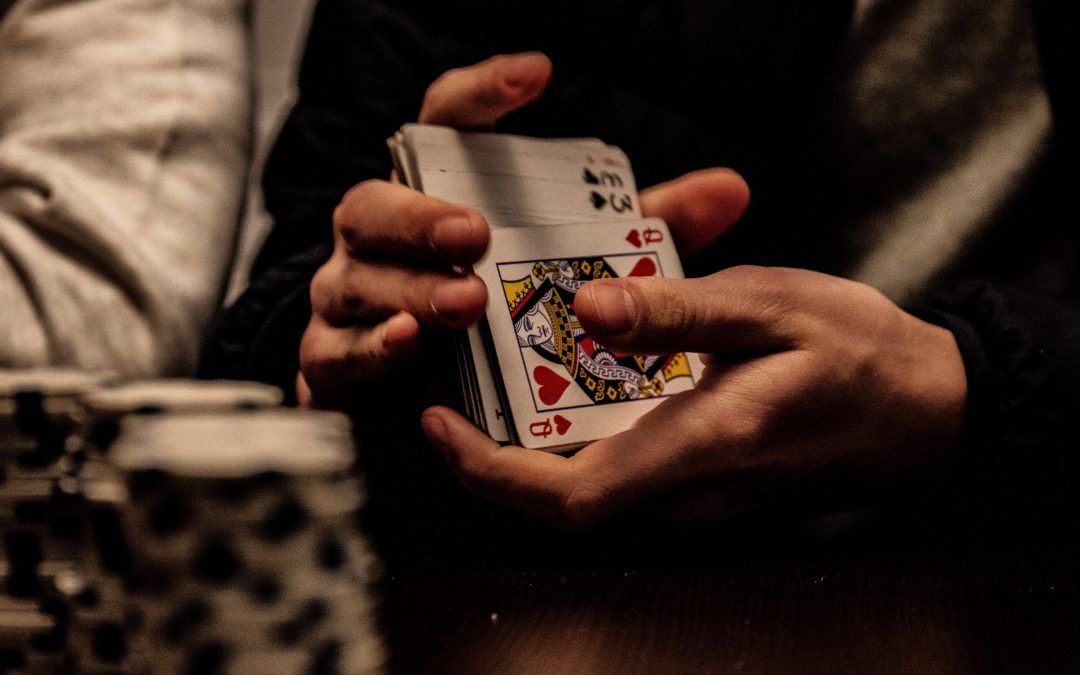Avoid This Very Common Poker Pitfall
When we talk about building a poker trap, we frequently refer to slowplaying a solid hand to deceive your opponent.
And although this is a valuable tactic occasionally, if you play poker carelessly, you can find yourself in a trap.
The most frequent cause of this is when you incorrectly gauge your hand’s strength. This poker hand is the ideal illustration of that.
Be able to tell a good poker hand from the nuts.
Preflop was where the first error in this hand was made. In a 6max game, playing this hand from an early position isn’t a massive error, but the optimal move here is to fold before the flip.
Now, if the flip fails:
Now that top and bottom pairs have been hit. It’s time to decide how to play this hand.
The critical thing to realize in this situation is that while we have a strong hand, we lack the nuts. In poker, “the nuts” refers to the best possible hand.
Numerous hands that can defeat us on this flop include a straight, a set, or a better two-pair. Additionally, there are multiple combinations of draws with substantial equity compared to our hand.
For instance:
If we were to put all our chips against it on the flop, this hand would be about a coin flip for us.
The critical thing to understand in a situation like this is that we will lose if we choose to play a large pot against most rational opponents.
If you choose to play a large pot, you will frequently only get action from a hand that beats you, and you will fold out all the pointers you win. I refer to this as one of those lose/lose scenarios in poker.
Very bad.
In light of this, placing a conventional continuation bet is the optimal move to play in this hand on the flip.
Avoid Getting Caught at the Poker Tables
We allow ourselves to maintain control over the size of the pot and the hand when we place a standard c-bet here.
Our adversary will either raise the hand, call or fold.
Okay, cool if he calls. Then, depending on the turn card, we can either keep our foot on the gas or slam on the brakes, as he probably has a draw.
It is certainly acceptable if he folds as well. We’re happy to take the pot alone.
And if he raises, we can call and reassess the position after the turn, depending on the card that comes up and our opponent’s choice.
But when we attempt to get the raise or check here, we essentially put ourselves in a trap. Because, as I have stated, we create circumstances in which the only action we are likely to receive is from a better hand.
It’s crucial to keep yourself out of poker traps. In poker, you should always seek win-win scenarios rather than lose-lose ones.
You desire to walk away from stronger hands while still getting value from lesser hands. I refer to this as a win-win situation.
However, by choosing the check/raise strategy in this hand, you put yourself in a precarious position on the flip, leaving you with no other viable options.
This is why it’s crucial to constantly have a strategy in place for every poker hand and to develop the ability to gauge your hand’s strength at all times accurately.
For more high-level poker strategy insights, see my most recent and widely read the article, 21 Texas Holdem tips the experts don’t want you to know.
When Is a Poker Trap Good to Be Set?
So, when is a good moment to set a poker trap?
Oh, that’s simple. When you genuinely possess “the nuts” at poker, that is. You might have a manufactured straight or a top set, for instance.
Using the previous flip as an example
With a hand, You could go for a check/raise here to expose the poker trap.
AA
or
KQ
Because of this, you can stay caught up in hand in either of these circumstances.
Since you have the better hand in both scenarios, we have no problem playing a big pot and taking home the entire pool.
Making sure the other player is aggressive is another crucial consideration when creating a poker trap.
Trying to trap a passive player is a standard error younger poker players make. Daniel Negreanu addresses this in his brand-new advanced poker training course.
When you try to set a trap against a passive player, the problem is that they will probably merely check it back, negating the entire point of establishing a surprise in poker.
Therefore, you should only set poker traps against aggressive players. Because they are most likely to place a wager at the moment, you exhibit any signs of weakness.
And, of course, you may spring the trap by pushing all of their dead money into the pot when you come over the top with a sizable raise.
Final Reflections
Poker is fundamentally a straightforward game, so the best way to win games with lesser stakes is to make the shortest play you can frequently.
The best course of action is to bet out and make the standard play on the flip when you have a lovely but not spectacular hand like this.
It is acceptable to be tricky and occasionally set a poker trap. However, you should only attempt it if you have the nuts (or are very close to it).
Additionally, it would help if you only attempted to trap aggressive players. Because they won’t fall for your ruses, passive poker players shouldn’t be your target.
Please share your thoughts on this poker hand in the comments section below. What strategy would you have used? Do you frequently set traps in poker?

